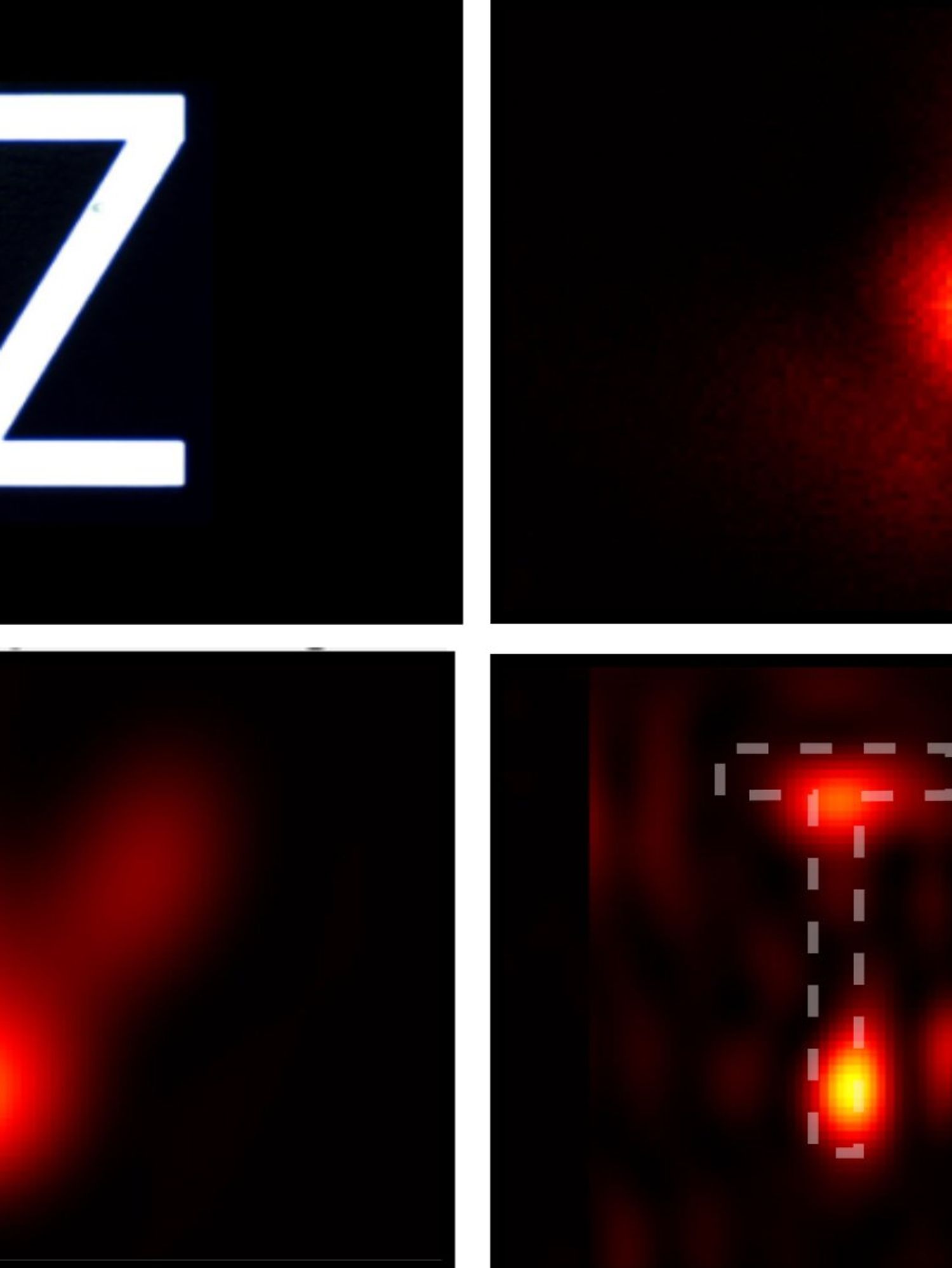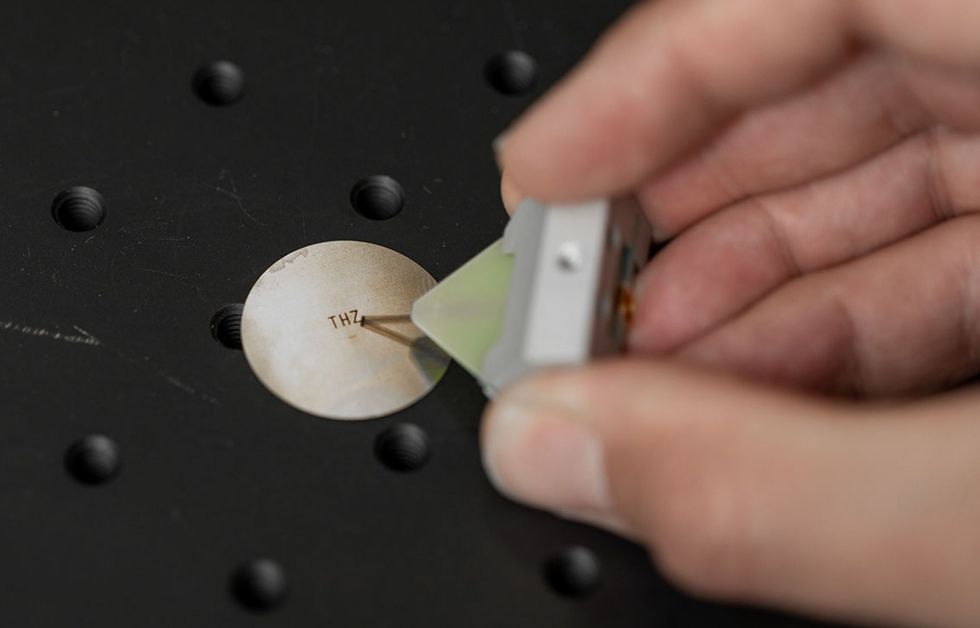Virtual Superlensing Made a Reality

A little bit of distance can make all the difference. That's what two researchers at the University of Sydney Nano Institute recently concluded in their study on a new method for superlensing," a way of seeing things that are smaller than the wavelength of light, and doing so without any actual lenses.
The researchers found a new way to crash through the diffraction limit, which prevents you from discerning any feature smaller than the wavelength of the light that reflects off it. Features smaller than that are encoded only in what are called evanescent waves, which have amplitudes that die off exponentially and are almost completely lost within a few wavelength.
Previously, evanescent waves have been detected by placing a photoconductive probe right next to the object being imaged, which can distort the results. It had been assumed that when the probe is too far from the object-even a tenth of the wavelength farther back-the subwavelength information is completely lost. We realized that it's not lost. It's just really, really dim," says author Boris Kuhlmey.
To regain that high-resolution information, researchers need to amplify the dim signal with a superlens, made of specially engineered metamaterials. But instead of a physical lens, Kuhlmey and coauthor Alessandro Tuniz used numerical calculations to achieve the same result. They measured tiny fluctuations in the electromagnetic field caused by the evanescent waves and virtually amplified these by applying equations that describe how the waves die out. Then, they could reconstruct the original field during postprocessing, achieving a resolution one-fourth the size of the diffraction limit.
What matters, says Kuhlmey, is not the specific technology they used but the ability to pick up high-resolution information farther from the sample than had been thought possible, even without a superlens.
 A researcher demonstrates how a photoconductive antenna scans the sample, which has features as small as 0.15 millimeters. The University of Sydney
A researcher demonstrates how a photoconductive antenna scans the sample, which has features as small as 0.15 millimeters. The University of Sydney
That's important because they were working with wavelengths of around 1 millimeter, which is in the terahertz frequency range. And although physical superlensing has been demonstrated in other frequencies, it has not been achieved here.
The terahertz region of the spectrum is a relatively new area of research, in part because the frequencies are too high to be used with electronics and too low for photonics, says Kuhlmey. But such frequencies could be important in biological research, due to water's strong absorbency of terahertz frequencies, and for peering through the ceramic coatings used on semiconductor chips, among other things. In every part of the spectrum, you find new physics," says Kuhlmey.
Tuniz and Kuhlmey note that their method is not the first to break through the diffraction limit, nor does it represent the highest resolution achieved. Other techniques, such as those using a very close probe, offer better resolution. But that resolution comes at a cost. These methods are slow and can be used only to scan small areas. We're adding to the library of available high-resolution techniques that someone could consider," says Tuniz.
To achieve high-resolution terahertz imaging without superlensing, Tuniz and Kuhlmey would have to place an expensive probe less than a millimeter away from the sample being observed. Tuniz was always afraid of scraping the instrument against that sample and damaging either object. To make matters worse, the probe can distort the very field it's there to measure. Alternately, using a physical lens to amplify the evanescent waves blocks out some of the light. By performing superlensing virtually, researchers eliminate that loss. It's niche, in a sense, but laboratories all over the world have equipment such as this to understand really complicated things," says Tuniz.
There will be really beautiful applications," adds Kuhlmey, though he acknowledges that it's unlikely to revolutionize microscopy as a whole.
In fact, the postprocessing central to the Australian approach is similar to techniques routinely used in other areas of microscopy, according to Durdu Guney who studies superlensing at Michigan Technological University. Although the application to terahertz imaging is new, Guney says, conceptually, I think the idea is not very novel." His research has used similar techniques in higher optical frequencies, for which superlensing is more advanced. Guney also questions whether the approach will be effective for more complicated objects, some of the features of which may be overwhelmed by noise.
After the research was published, Tuniz and Kuhlmey found that it had been posted on social media, where commenters made joking allusions to a trope in police-procedural TV shows in which the characters enhance" blurry CCTV footage to reveal a key detail. Using real concepts of physics, Tuniz acknowledges that the end result is quite similar.
It is turning the absurdity into a reality."